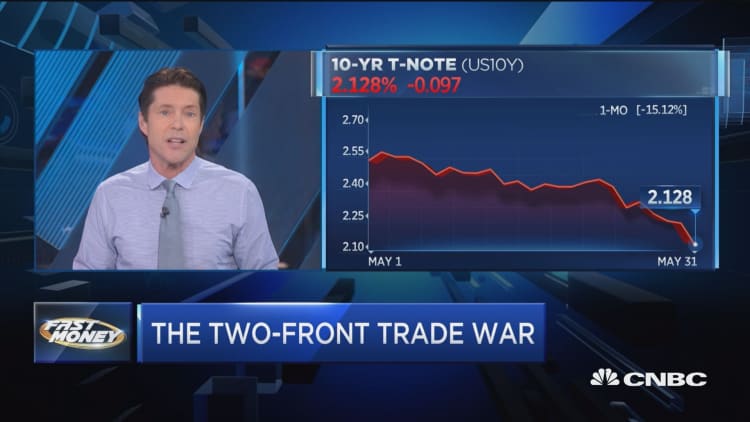There's a key measure of stock market volatility that shows why this month's sell-off has been different than the drop in December.
The CBOE Volatility Index, or VIX, is sometimes known as "the fear gauge." The VIX helps measure Wall Street's expectations for large shifts in the stock market in the coming months by looking at prices on S&P 500 options.
The VIX is near 18.50 on Friday – close to its 200 day moving average of 16.98. But despite the index falling more than 6% this month, the VIX has hardly budged. It topped out in May at 23.38 – well below the December high of 36.20, a month where the S&P 500 dropped 9.2%.

If this is the fear gauge, why is there not as much fear out there as in December considering there are arguably more things to worry about with a trade fight brewing with not only China, but Mexico now?
For one, investors believe strongly that the Federal Reserve will step in and cut rates, possibly multiple times this year, if stocks keep falling.
Investors didn't have such comfort in December, a sell-off which came right after a Fed rate hike. Since then, Fed officials have pivoted to a softer, more flexible stance on rates. And now the market predicts, they will more likely than not, cut this year.
Fear still 'lurking'
ACG Analytics' Larry McDonald says the fear is still there, it's just that people are making a different kind of bet on the VIX. He's watching how investors are trading 2-month VIX futures versus 8-month VIX futures. That the two VIX futures are trading at about the same price is a sign that this drop isn't over, he said.
"When you're like 5% off the highs, you shouldn't have a VIX curve that's flat," McDonald said. "What that tells you is that although the selling is orderly, there's something big that's lurking here."
Investors are buying the 2 month VIX futures as a means of "buying protection," McDonald said. This a practice hedge funds typically utilize when they anticipate a down turn.
"Before the big mess, what happens in every major draw down is the capital flows into safe places," McDonald said.
Representative of this shift is how investors are rotating into defensive stocks, such as the consumer staples. McDonald said "staples are really holding up" and are outperforming consumer discretionary stocks. The technology sector also similarly showing defensive moves, as "there's also a rotation out of semiconductors into software," McDonald said.


